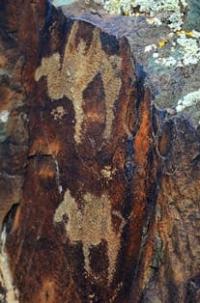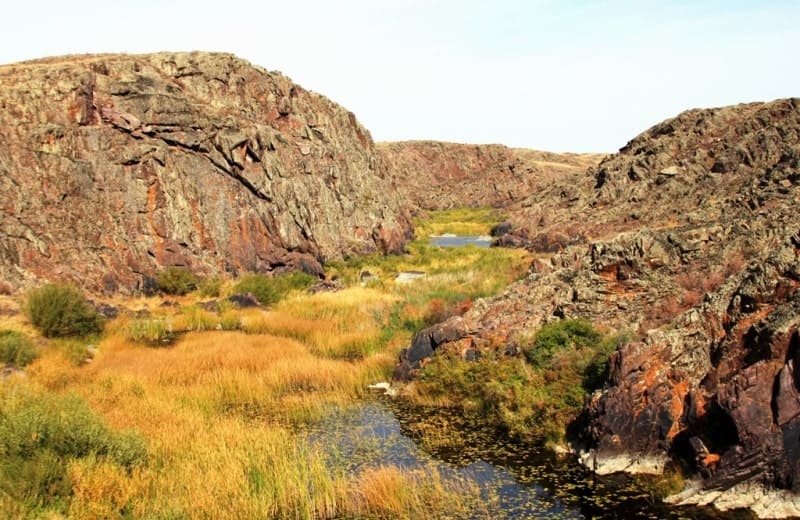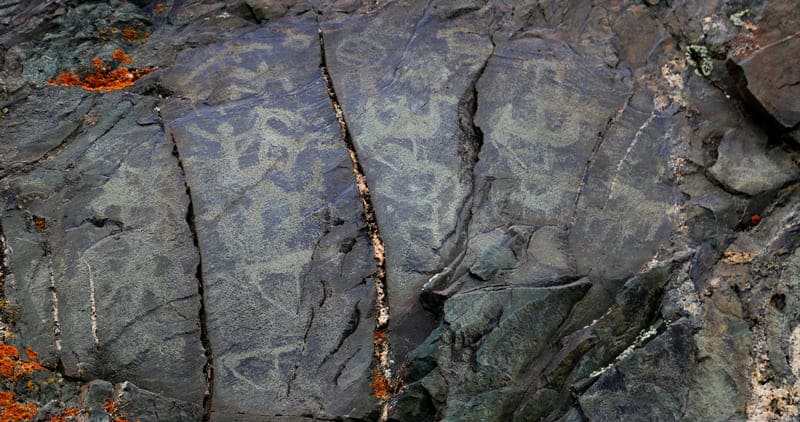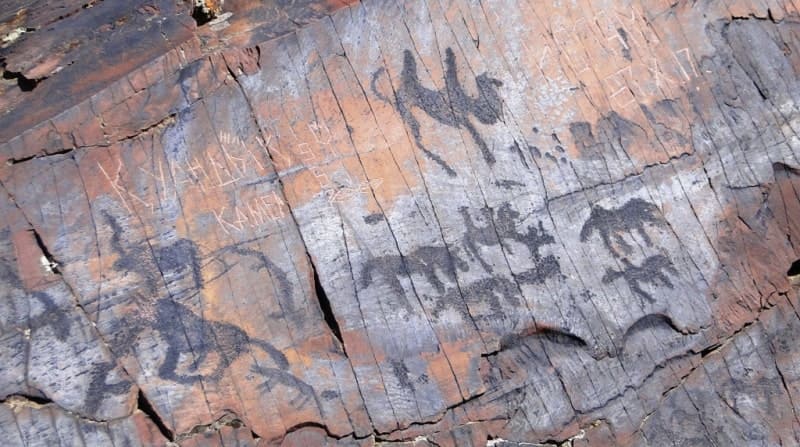You are here
Rock paintings Baikonyr.


Short trip to sights Ulytau monuments.
"The gallery created under the open sky by artists of a classical antiquity is surprising. The engravings cut on stones - the invaluable cultural heritage left in Kazakhstan from our far ancestors"
Academician A. H. Margulan.
Short detour from Kazakhstan to Kyrgyzstan.
Baikonyr rock paintings are located at an altitude of 336.4 meters above sea level, are located on the rocks of the right bank of the Baikonur River, the Baikonur 1 drawings are located 2.6 kilometers to the west and slightly south of the Baikonur village, the Baikonur 2 drawings are 3.4 kilometers southwest of the village of Baikonyr in the Ulytau district of the region of the same name.
Petroglyphs are depicted on flat blocks 2 - 4 meters above the river level, and in some places on an uneven surface. Many drawings have copies. According to V.A. Novozhenov, copying rock paintings depended on the condition of the flat stones and the image technique.
In many cases, petroglyphs are carved with a thin object, drawing out figures with thin lines. Petroglyphs are made by point knocking, sanding is less common. On one side there are depicted people, roe deer, a bow - the subject of hunting, and on the other side: elk, horses.
In some places you can see running wolves, people on horses, and a caravan (camels) in the background. The drawings were made on rocky outcrops of shale rocks using the technique of fine-point knockout in combination with tracing and sanding.
Most petroglyphs are images of horses, people, camels, argali, snakes, dogs, wolves, human figures, “sun-headed” anthropomorphic creatures, hunting scenes, scenes of animal struggle, mountain goats and saigas.
In the summer, the water in the Baikonur River dries up and collects in ravines, forming a small lake. During the Great Silk Road, caravan riders quenched their thirst and stayed here for the night. Petroglyphs from the early period of nomadic civilization are characterized by the depiction of mythological subjects with a complex composition.
In the works of academician A.Kh. Margulan notes:
- “The gallery created in the open air by artists of the ancient world is amazing. Engravings carved on stones are an invaluable cultural heritage left in Kazakhstan by our distant ancestors.”
Further, when describing the petroglyphs on the rocks of Saryarka, especially about the rock paintings along the Baikonur River, the author writes with admiration:
- “How skillfully and masterfully the majesty of Bactrian camels, the beautiful posture of frisky horses, the gracefulness of deer and saigas, the image of a predatory leopard are depicted.”
Rock paintings are characteristic of the late Bronze and early Iron Ages. Rock paintings reflect the history of the steppe in all its diversity. During the Bronze Age, during the period of early nomads, the forms of compositions often arose on the basis of mythological subjects and legends.
Often paintings from those times were painted over older images. Often the original drawing was adjusted according to new rituals. Many images reflected the daily life of nomadic life, as well as wild animals - argali, mountain goats, kulans.
The plot and compositional line of the Baikonir petroglyphs proves that in ancient times there was a center of religious beliefs, which became a sacred place of worship. Today this is one of the sacred places in Kazakhstan.
History of study of rock paintings at Baikonyr.
The first information about the cave paintings of Baikonyr dates back to 1914 - 1916. In 1926, the drawings were examined by geologist Nadezhda Voronets. At the end of the 30s of the 20th century, Academician K. Satpayev visited here.
In 1947 - 1948 Central Kazakhstan archaeological expedition led by A.Kh. Margulana. From 1983 to 1989, the Baikonyr petroglyphs were studied by an archaeological expedition of KarSU.
Geographic coordinates of Baikonyr 1 rock paintings: N47°48'59 E66°00'46
Geographic coordinates of Baikonyr 2 rock paintings: N47°48'28 E66°00'21





Authority:
"Mysteries of rock paintings". Valentin Shipunov. http://inkaraganda.kz/articles/144176
Photos by
Alexander Petrov.







